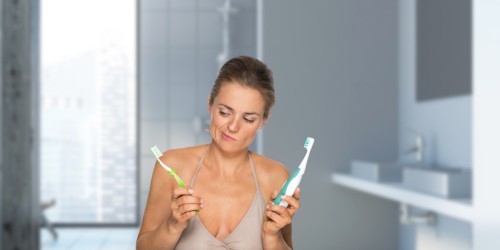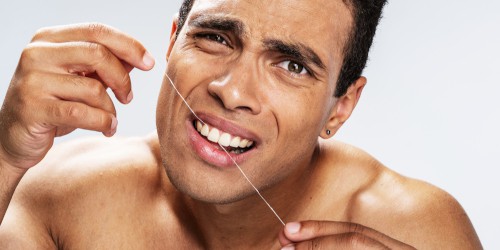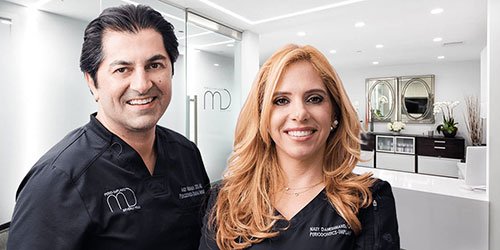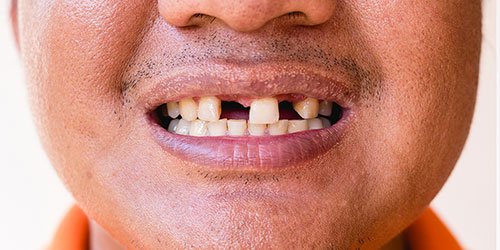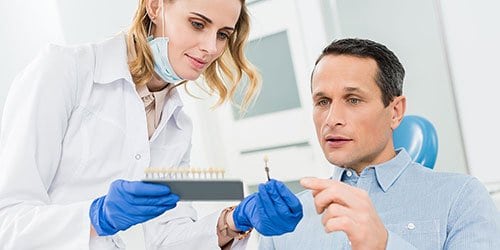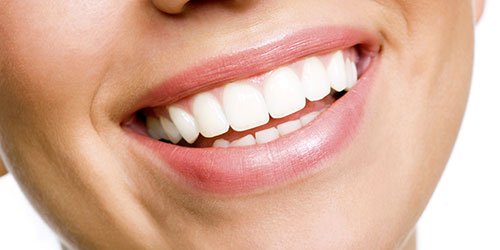“Have you been flossing?”
If your dentist or dental hygienist asks you about flossing, they already know the answer.
We previously covered the importance of flossing, but is traditional floss really the best form of interdental cleaning (cleaning between the teeth)?
According to the American Dental Association (ADA), flossing incorrectly, infrequently, or not at all can lead to gum disease, tooth decay, and halitosis (bad breath). Not flossing also leads to plaque buildup on teeth.
Most people know that regular flossing is part of good dental hygiene, but most Americans either floss less than daily or not at all.

People who don’t like to floss with string or find it ineffective often turn to water flossers to remove plaque and clean the tight spaces between teeth and gums.
In the question of water flosser vs floss, the right one to choose is the one you will use. A growing number of people enjoy water flosser cleaning and their results. Combining both traditional dental floss and water flossing is the ultimate in good oral hygiene.
What is a water flosser?
A water flosser is an oral irrigator. Using a focused stream of water and air, a water flosser washes away food debris, bacteria, and plaque. The most well-known water flosser manufacturer is Waterpik and many people use the terms interchangeably.
Many people find the water flosser’s pressurized stream of water easier to control than traditional string floss. It can also reach areas of the mouth that are tricky to get string floss into.
Is a waterpik better than flossing?
Water pick users say their mouths feel fresher after use, and that’s because water flossers are more effective than dental floss or floss picks at plaque removal.
Studies show that water flossers remove 29% more plaque than floss. Water flossers are also more gentle for people with gum sensitivity. In addition, patients with less dexterity tend to find water flossers easier to use than most other interdental cleaners.
Since the best flosser is the one you actually use, water flossers are great tools for oral care.
How to use a water flosser
A water flosser is simple to use. Select a tip, connect it to the water flosser, and fill the device’s reservoir with water (or connect it to a water source). Set the water flosser on the lowest pressure setting and place the tip in your mouth.
Turn on the water flosser and direct the tip at your gum line, moving it along to clean your teeth and gums. Clean your water flosser after each use to be ready for the next use.

How to find the best water flosser
Consider your lifestyle when looking for the best water flosser. For example, if you travel, look for a cordless water flosser that’s small and portable. If you have a family and plan to share it with them, get a water flosser that has multiple tips so everyone can have their own.
Some water flossers have multiple pressure settings so each person in the family can get the best level of cleaning for them.
So, should I use a water flosser?
The obvious answer is yes! Give water flossing a try—most people who try water flossing never want to go back to using string floss alone.
In water flossing vs floss, there is no clear winner. Using string dental floss and a water flosser together will provide the most thorough cleaning and dental hygiene.
Choosing and using a water flosser is an effective part of oral hygiene. Keeping teeth and the nooks and crannies between them clean is just one part of dental health. Holistic dental and periodontal care from professionals you can trust is essential to oral health.
Not only can they watch for problems like gingivitis, cavities, or periodontal disease, but dental and periodontal care can include advice on oral hygiene that will keep these conditions from occurring.
Frequently Asked Questions about water flossers
Why is flossing important?
No matter how thoroughly you brush or how fancy your toothbrush is, brushing alone won’t remove the plaque, bacteria, and food particles between teeth and at the gumline. Floss gently scrapes the surfaces of the teeth to remove plaque before it turns into tartar – a hard substance that can only be removed by your dentist or periodontist. Cleaning the nooks and crannies between teeth will also prevent conditions such as periodontal disease and gingivitis.
Should I water floss before or after brushing?
Experts say it doesn’t matter whether you floss with string floss and water floss before brushing your teeth or after.
However, studies show it is better to use string floss and an oral irrigator at night, which lets you sleep with a clean mouth, giving less chance for bacteria to grow and cavities to form.
Water flosser vs string floss: which is better?
Using a water flosser can be better than flossing for those with braces or other dental work such as crowns and dental implants that can be difficult to clean around. Those with crooked teeth may also find water flossing an easier way to keep spaces between teeth clean.
Water flossing will remove more plaque than flossing, making it more effective. The most effective way to clean between teeth and along the gums is whichever method you use regularly and properly. You should add either string flossing, water flossing, or both to brushing as a nightly dental routine.
Does a waterpik replace flossing?
Dentists and periodontists, or dental specialists who focus on the support structures of the teeth, say that water flossing is best used in concert with using string floss. The string floss can remove larger debris, while water flossing removes fine particles and bacteria.
Of course, those who don’t use string floss regularly or at all should at least use water flossing for good oral health.
Why choose MD Periodontics for your periodontal care?
Two of the most trusted and respected periodontists and holistic dentists in Southern California are the board-certified husband and wife team of Dr. Abdy Moshrefi, DDS, and Dr. Nazanin Daneshmand, DDS.
At our beautiful Beverly Hills offices, MD Periodontics offers patients the best periodontal treatment that Los Angeles has to offer. Our holistic approach to dentistry ensures that your treatment utilizes the least toxic materials available, the most advanced technology, and amenities including aromatherapy to minimize discomfort and stress during procedures. You’ll experience a supportive atmosphere you would never expect to find at a dental office and results that you will love.
To schedule a consultation, click here or call us at (310) 859-9449. Your smile will thank you!
We are conveniently located for patients throughout Southern California and the Los Angeles area. Our board-certified periodontists and implant dentistry experts are available at locations in or near Santa Monica and Beverly Hills. We are conveniently located near West Los Angeles, Culver City, West Hollywood, Downtown Los Angeles, Marina del Rey, Pacific Palisades, Malibu, Manhattan Beach, Sherman Oaks, and Encino.
- How To Pick The Best Dental Implant Specialist Near Me - September 17, 2024
- Can Bleeding Gums Be a Symptom of Something More Serious? - May 27, 2024
- What Is Hydroxyapatite Toothpaste, and Is It Better for You? - May 1, 2024
 (310) 859-9449
(310) 859-9449 Water Flosser vs Floss: Is it Time to Ditch the String?
Water Flosser vs Floss: Is it Time to Ditch the String?
 or call us at
or call us at 













